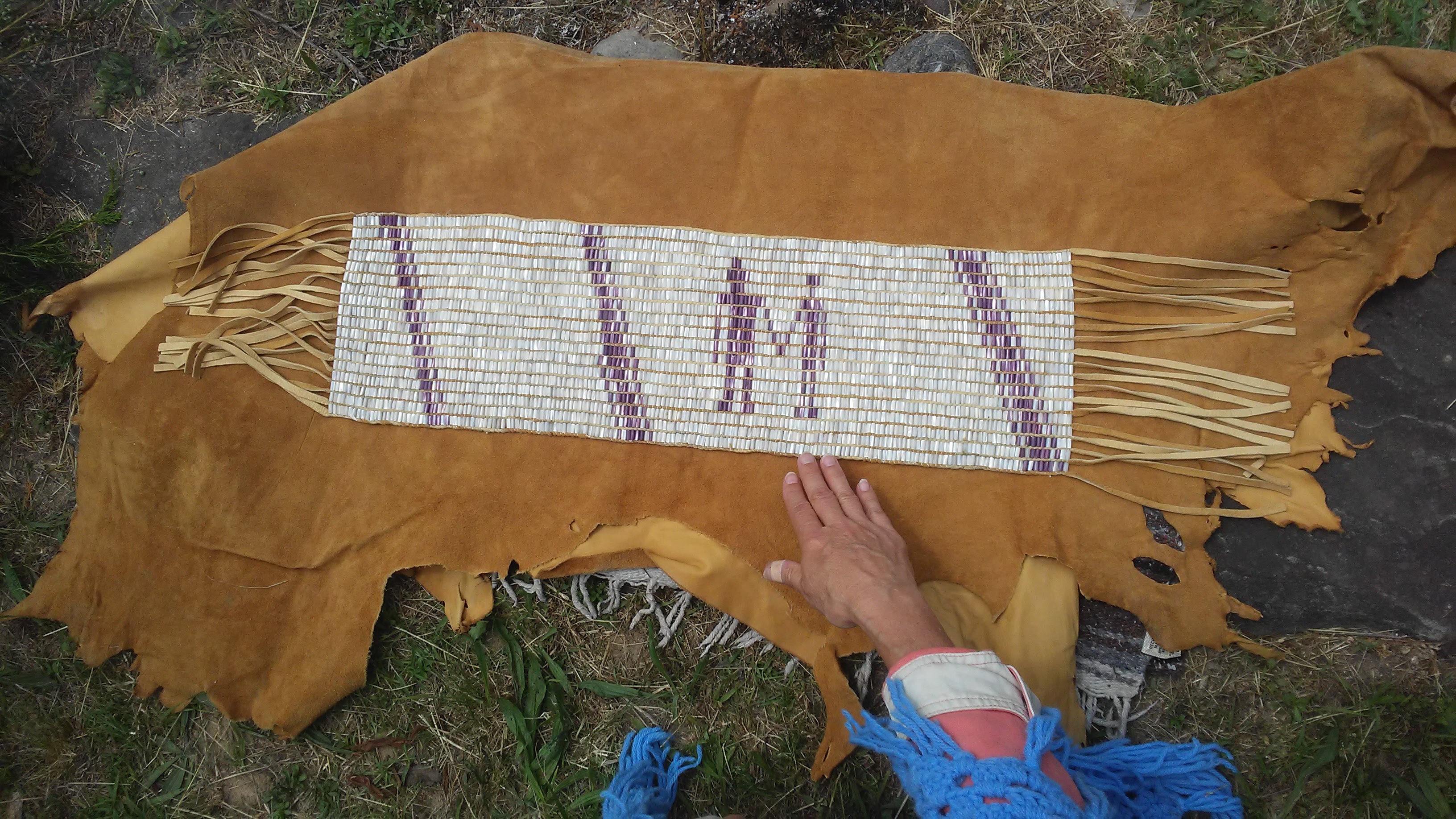
A consistent practice during opening worship of Yearly Meeting Sessions is an acknowledgment that the places where we gather are the ancestral land of native people who were here for millennia before settlers arrived from other continents. Over the years, our practice for generating this acknowledgment has varied. For a while, the same person crafted and shared the statement at each Sessions. After that, a different person was asked each time we gathered to be responsible for the acknowledgment. In every case, the individual providing the statement wrote independently of others and shared it in their own words.
Last winter, Quaker Life Council wanted to establish a consistent, meaningful, and manageable practice that all Friends recognize as the way we acknowledge the land we meet on. To accomplish this, QLC created a sprint with the charge of recommending a practice to guide PYM in the use of land acknowledgements.
The sprint was expected to include people who were active in yearly meeting activities and in Sessions, and who have engaged in land acknowledgment practices and/or deeply understand the issues related to stating a land acknowledgment. The people appointed were Jean-Marie Prestwidge Barch (Schuylkill Meeting), Jeanne Elberfeld (Reading Meeting), Tyrone Dancing Wolf Ellis (Lenape Tribe), sandra boone murphy (Mickleton Meeting), Sean Connolly (Arch Street Meeting House Executive Director), and Robert Greene (Princeton Meeting).
The sprint began by settling into worship to reflect on the principles needed in a land acknowledgment, in which the following basic concepts arose.
The statement will:
- encourage people to embrace what they know and what they do not know.
- create space for people to consider the indigenous peoples of the region in which they live; Philadelphia Yearly Meeting covers a large geographic region and the tribes represented are not homogenous.
- acknowledge that change is difficult and also healthy.
- incorporate resilience—we are stepping into a stream that is constantly changing; this will be a living document which can change and grow.
- be simple and authentic.
- propose a call to action of some sort—based on where each individual person finds themselves in this time.
- encourage deeper exploration and understanding of the record of the historic involvement of Philadelphia Yearly Meeting in relationships with indigenous peoples.
- include a commitment to look at the present and the future, though we may learn from the past.
- encourage understanding of the difference between federally-recognized groups and those who do not carry this designation.
- remind us all of the request that there be “nothing about us without us” as we make movement forward in developing relationships with indigenous peoples of this region.
- transcend the idea that an “acknowledgement” implies owning up to wrongdoing; rather it will help us all look forward to ongoing relationships where we are all seated together at the table looking at what serves all.
The sprint’s work created a set of queries and a simple statement that can be used for Sessions and any other gathering. It was road-tested at Caln Quarterly Meeting, where it was found to be centering and activating for Friends. This statement will be shared in worship at Sessions on July 6th on the Haverford College campus and at future sessions.
The Statement
- What do I know about the indigenous people who live and have lived in the region in which I live? How can I grow more fully into that?
- What do I know about the relationship between the indigenous people in the region in which I live and the federal and state government? How can I grow more fully into that?
- How am I living into my responsibility to be a good steward of the region in which I live, including the land and the relationships with other living beings? How can I grow more fully into that?
We gather today as people of Philadelphia Yearly Meeting with affiliations to many groups of worshipers which occupy Lenapehoking, the ancestral lands of and home to many indigenous people. We each recognize and commit to the need to understand the historic and current relationship among all those who inhabit these lands and will each undertake to inform ourselves of these facts. We have much to learn and can only begin with what we know. We understand that knowledge and commitment must underpin action, and that reciprocal and respectful connection and communication must undergird right relationship. We intend to grow into this commitment, connection and communication, “…as long as the creeks and rivers flow and the sun, moon, and stars endure.”
A follow-up sprint is in the works now, which will provide the core information to inform the creation of comprehensive visual tools that illustrate the locations of indigenous nations across the geography PYM occupies. The visual representation of the PYM geography could be debuted as soon as November Continuing Sessions.